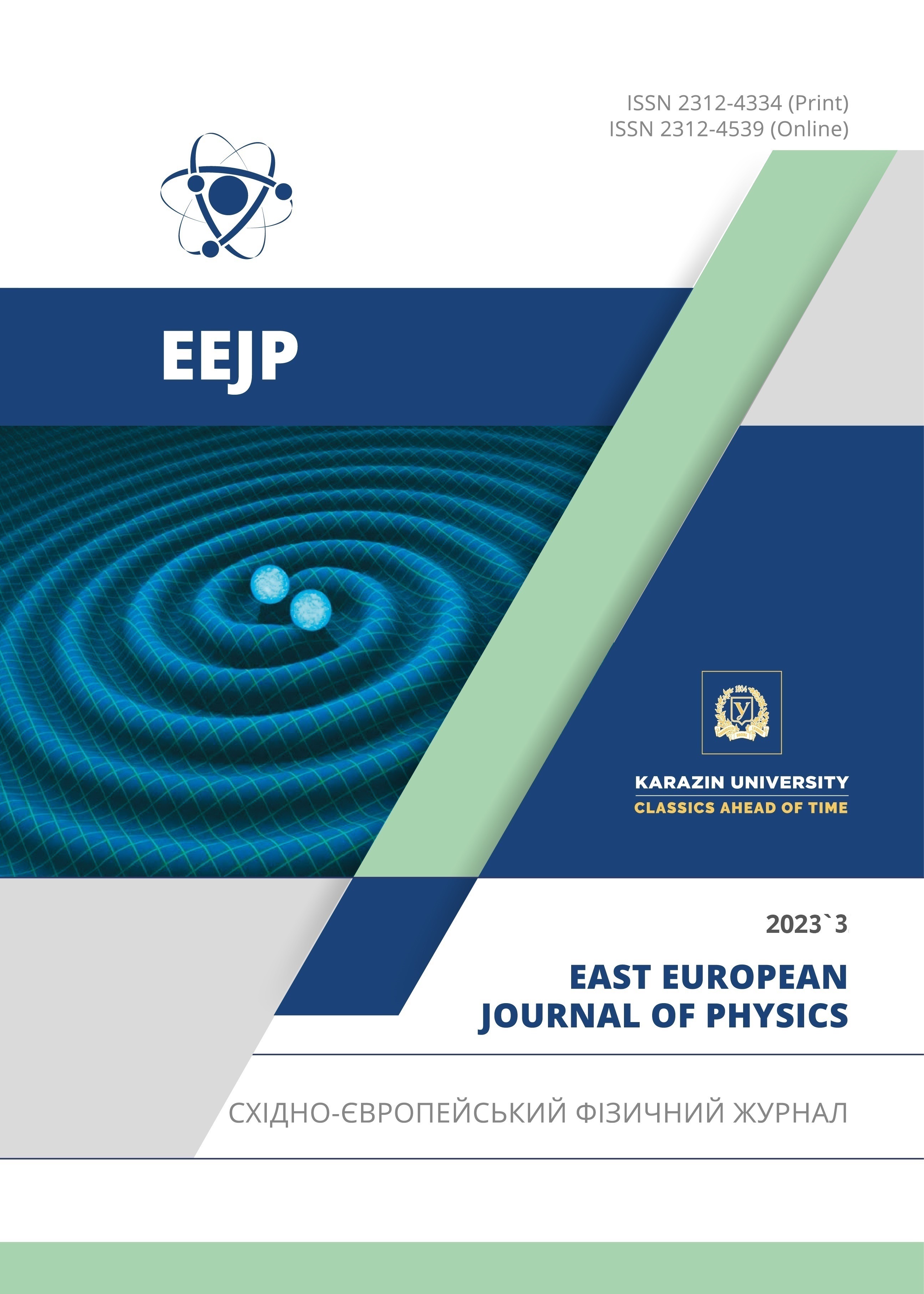Effectiveness of Wavelet Denoising on Secondary Ion Mass Spectrometry Signals
Abstract
Wavelet theory has already achieved huge success. For Secondary Ions Mass Spectrometry (SIMS) signals, denoising the secondary signal, which is altered by the measurement, is considered that an essential step prior to applying such a signal processing technique that aims enhance the SIMS signals.The most efficient and widely used wavelet denoising method is based on wavelet coefficient thresholding. This process involves three important steps; wavelet decomposition: the input signals are decomposed into wavelet coefficients, thresholding: the wavelet coefficients are modified according to a threshold, and reconstruction: the modified coefficients are used in an inverse transform to obtain the noise-free-signal. Several researchers have used thresholding wavelet denoising techniques.
The choice of wavelet type and the level of resolution can have a significant influence; it is important to note that the choice of resolution level depends on the type of signal we are dealing with, the nature of the present noise, and our specific goals for the denoised signal. It is generally recommended to test different resolution levels and evaluate their impact on the quality of the denoised signal before making a final decision. Moreover, the results obtained in wavelet denoising can be significantly influenced by the selection of wavelet types. The chosen wavelet type plays a crucial role in the extraction of signal details. Indeed, the effectiveness of denoising the MD6 sample has been demonstrated by the results obtained with sym4, db8, Haar and coif5 wavelets? These wavelets have effectively reduced noise while preserving crucial signal information, leading to an enhancement in the quality of the denoised signal.
Downloads
References
J.C. Vickerman, Book Review “Secondary ion mass spectrometry-basic concept, instrumental aspects, applications and trends,” A. Benninghoven, F.G. Rudenauer, and H.W. Werner, (Wiley-Interscience, 1987). https://doi.org/10.1002/sia.740100811
R. Shishido, M. Fujii, T. Seki, T. Aoki, J. Matsuo, and S. Suzuki, “Yields and images of secondary ions from organic materials by different primary Bi ions in time-of-flight secondary ion mass spectrometry”, Rapid Commun. Mass Spectrometry, 30(4), 476 482, (2016). https://doi.org/10.1002/rcm.7455
J.D. Holmes, J. O’Connell, R. Duffy, and B. Long, “Surface Functionalization Strategies for Monolayer Doping: Secondary ion mass spectrometry”, Encyclopedia of Interfacial Chemistry, 829-834 (2018). https://doi.org/10.1016/B978-0-12-409547-2.14125-3
M. Boulakroune, and D. Benatia, “Multi-scale Deconvolution of Mass Spectrometry Signals”, in: Advanced in Wavelet Theory and Their Applications in Engineering, Physics and Technology, edited by D. Baleanu, Chap. 7, (IntechOpen, 2012). pp. 125-152. https://doi.org/10.5772/37772
M.R.Md. Yusof, A.K. Ariffin, and M. Ismail, “Wavelet denoising as signal feature dependent kernel convolution,” The 2018 International Conference on Research and Learning of Physics, Journal of Physics: Conf. Series, 1185(1), 012026 (2019). https://doi.org/10.1088/1742-6596/1185/1/012026
S. Gaci, “The use of wavelet-based denoising techniques to enhance the first-arrival picking on seismic traces”, IEEE transactions on geoscience and remote sensing, 52(8), 4558-4563 (2014). https://doi.org/10.1109/TGRS.2013.2282422
M. Boulakroune, “Reliability of multiresolution deconvolution for improving depth resolution in SIMS analysis,” Applied Surface Science, 386, 24-32 (2016). https://doi.org/10.1016/j.apsusc.2016.05.164
L. Chiung-Chou, Y. Hong-Tzer, and C. Hsueh-Hsien, “Denoising Techniques with a Spatial Noise-Suppression Method for Wavelet-Based Power Quality Monitoring,” IEEE Transactions on Instrumentation and Measurement, 60(6), 1986-1996 (2011). https://doi.org/10.1109.TIM.2011.2115610
G. Maximilian, P. Souvik, G. Ebrahim, F.S. Aaron, S. Nidul, G. Rajdeep, and M.D.Z.I. Ahmed, “A Survey on Denoising Techniques of Electroencephalogram Signals using Wavelet Transform”, Signals, 3(3), 577-586 (2022).https://doi.org/10.3390/signals3030035
T. Zikov, S. Bibian, G.A. Dumont, M. Huzmezan, and C.R. Ries, “A wavelet based de-noising technique for ocular artifact correction of the electroencephalogram,”in:Proceedings of the Second Joint 24th Annual Conference and the annual Fall Meeting of the Biomedical Engineering Society Engineering in Medicine and Biology, (Houston, TX, USA, 2002).https://doi.org/10.1109/IEMS.2002.1134407
X. Bo, X. Zhangqiang, W. Zhijian, Z. Lijiao, Z. Dazhou, and L. Fusheng, “Gamma spectrum denoising method based on improved wavelet threshold,” Nucleat Engineering and Technology, 52(8), 1771-1776 (2020). https://doi.org/10.1016/j.net.2020.01.025
Md. Mamun, M. Al-Kadi, and M. Marufuzzaman, “Effectiveness of wavelet denoising on electroencephalogram signals,” Journal of Applied Research and Technology, 11(1), 156-160 (2013). https://doi.org/10.1016/S1665-6423(13)71524-4
D. Vilimek, J. Kubicek, M. Golian, R. Jaros, R. Kahankova, P. Hanzlikova, D. Barvik, et al., “Comparative analysis of wavelet transform filtering systems for noise reduction in ultrasound images,” Plos. Global Public Health, 17(7), e0270745 (2022).https://doi.org/10.1371/journal.pone.0270745
A. Yahyaoui, B. Necib, A. Nour, and S. Rechak, “Analyse par la transforméed’ondelettes de delaminage et porosite dans les composites stratifies,” Sciences &Technologie B, Sciences de l’ingénieur, 0(30), 17-24 (2009).
Copyright (c) 2023 Nadia Dahraoui, Mohamed Boulakroune, S. Khelfaoui, S. Kherroubi, Yamina Benkrima

This work is licensed under a Creative Commons Attribution 4.0 International License.
Authors who publish with this journal agree to the following terms:
- Authors retain copyright and grant the journal right of first publication with the work simultaneously licensed under a Creative Commons Attribution License that allows others to share the work with an acknowledgment of the work's authorship and initial publication in this journal.
- Authors are able to enter into separate, additional contractual arrangements for the non-exclusive distribution of the journal's published version of the work (e.g., post it to an institutional repository or publish it in a book), with an acknowledgment of its initial publication in this journal.
- Authors are permitted and encouraged to post their work online (e.g., in institutional repositories or on their website) prior to and during the submission process, as it can lead to productive exchanges, as well as earlier and greater citation of published work (See The Effect of Open Access).








